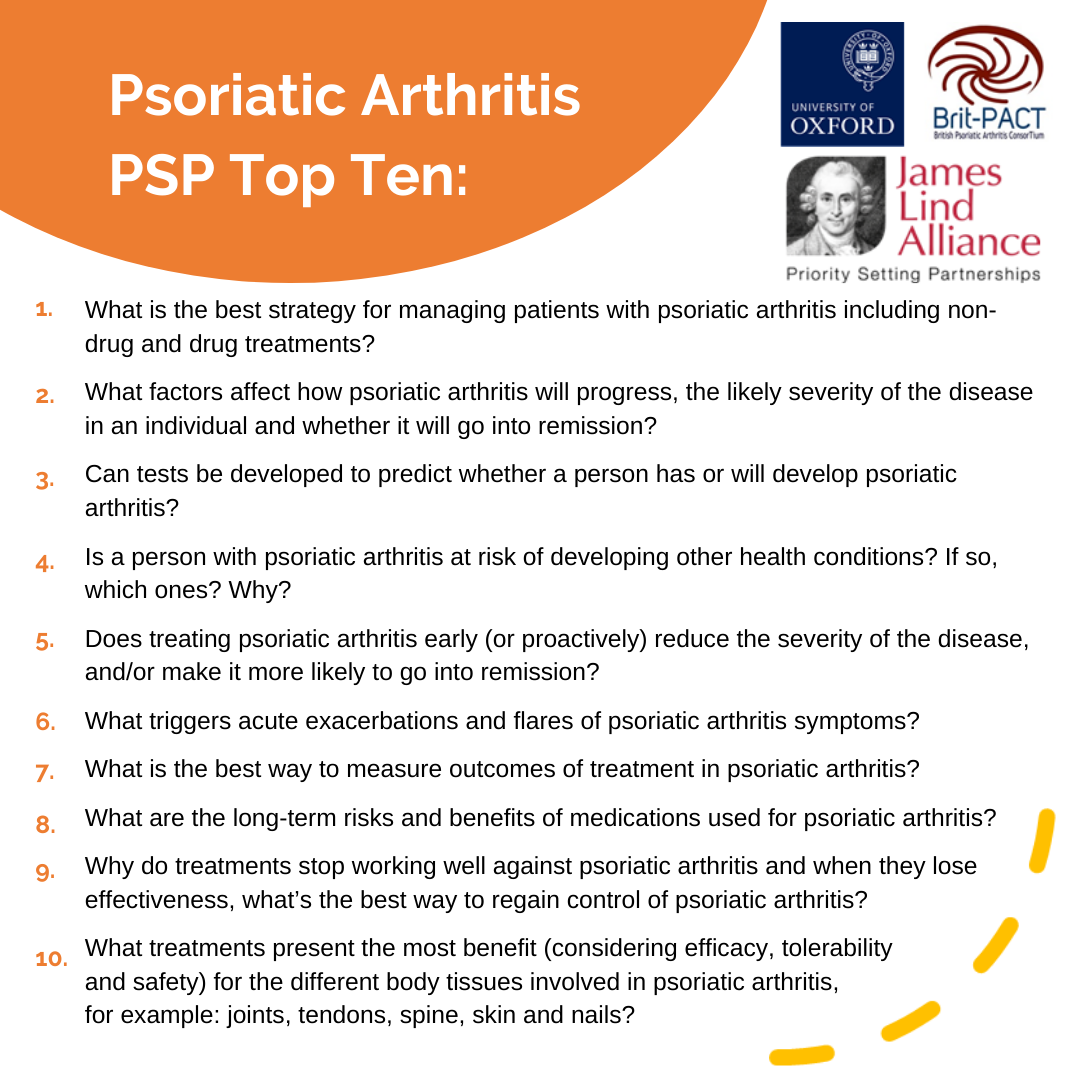
The British Psoriatic Arthritis Consortium has worked with the James Lind Alliance to run a priority setting partnership (PSP), and in August launched their ‘Top Ten’ list of research priorities for psoriatic arthritis. These have been agreed upon by patients, carers and clinicians, and the launch marks the culmination of the psoriatic arthritis PSP research.
Brit-PACT is delighted to reveal the Top Ten Psoriatic Arthritis Research Priorities, agreed upon by people who are living with psoriatic arthritis, carers and healthcare professionals.
This list will be considered by research funders to ensure future psoriatic arthritis research focuses on the areas that matter most to the people in the UK who live with the condition, and those involved in its care and treatment.
The Top Ten Psoriatic Arthritis Research Priorities are:
- What is the best strategy for managing patients with psoriatic arthritis, including non-drug and drug treatments?
- What factors affect how psoriatic arthritis will progress, the likely severity of the disease in an individual and whether it will go into remission?
- Can tests be developed to predict whether a person has or will develop psoriatic arthritis?
- Is a person with psoriatic arthritis at risk of developing other health conditions? If so, which ones? Why?
- Does treating psoriatic arthritis early (or proactively) reduce the severity of the disease and/or make it more likely to go into remission?
- What triggers acute exacerbations and flares of psoriatic arthritis symptoms?
- What is the best way to measure outcomes of treatment in psoriatic arthritis?
- What are the long-term risks and benefits of medications used for psoriatic arthritis?
- Why do treatments stop working well against psoriatic arthritis, and when they lose effectiveness, what’s the best way to regain control of psoriatic arthritis?
- What treatments present the most benefit (considering efficacy, tolerability and safety) for the different body tissues involved in psoriatic arthritis, for example, joints, tendons, spine, skin and nails?

